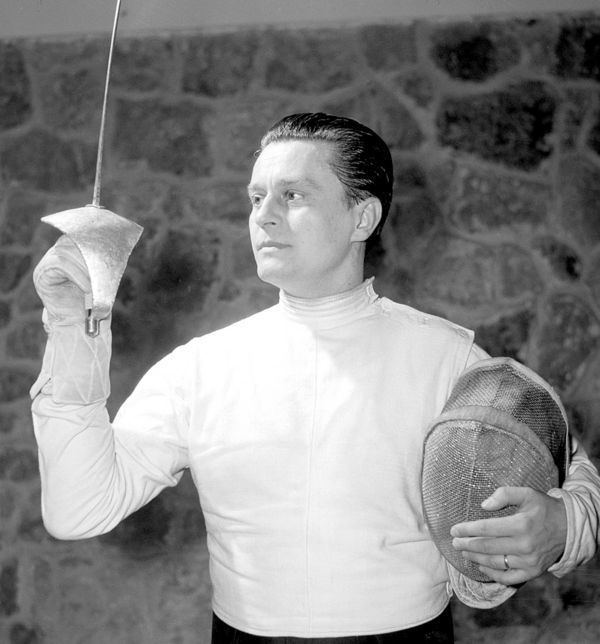
Masters of the Blade: A Look at Famous Fencers Throughout History
Fencing, a sport demanding precision, agility, and strategy, boasts a rich and storied history. From ancient gladiatorial combat to modern Olympic competition, skilled fencers have captivated audiences and left indelible marks on the sport’s evolution. While precise records are scarce for earlier eras, certain names have risen above the fray, becoming legendary figures whose skill, charisma, and impact continue to resonate. This article delves into the lives and legacies of some of history’s most famous fencers, exploring their contributions to the sport and their enduring influence.
Early Masters: The Precursors of Modern Fencing
Before the formalized rules and structured competitions of modern fencing, swordsmanship was a crucial life skill, integral to warfare and self-defense. While individual names are often lost to time, certain schools and traditions produced exceptionally skilled fighters whose techniques and philosophies shaped the future of the sport. The Italian tradition, flourishing during the Renaissance, is particularly notable. Masters like Domenico Angelo (1722-1802), though not a competitor in the modern sense, played a pivotal role in codifying and disseminating fencing techniques. Angelo, an Italian master who immigrated to England, established a renowned fencing academy and authored influential manuals that became foundational texts for generations of fencers. His emphasis on elegance and precision profoundly impacted the development of the sport, establishing a standard of excellence that continues to inspire.
Similarly, the French school of fencing developed its own distinct style and influential figures. While specific names from earlier periods are less readily available, the tradition contributed significantly to the development of foil, épée, and sabre fencing as we know it today. The French emphasis on grace and fluidity complemented the Italian emphasis on precision, leading to a diverse and refined approach to the sport.
The Rise of Competitive Fencing: Pioneers of the Modern Era
The 19th and 20th centuries witnessed the formalization of fencing as a competitive sport, leading to the emergence of prominent athletes who pushed the boundaries of skill and strategy. Italo Santelli (1897-1963), an Italian foil fencer, stands out as a dominant force in the early 20th century. A three-time Olympic gold medalist, Santelli’s lightning-fast attacks and impeccable footwork revolutionized foil fencing. His aggressive style, coupled with exceptional technical proficiency, earned him a reputation as one of the greatest foil fencers of all time. His legacy extends beyond his Olympic triumphs; his coaching and mentorship shaped the careers of numerous successful fencers, solidifying his influence on the sport’s development.
Aladár Gerevich (1910-1991), a Hungarian sabre fencer, holds an unparalleled record in Olympic history. He won seven consecutive Olympic medals, including six golds, a feat that remains unmatched in fencing. Gerevich’s dominance stemmed from his exceptional tactical acumen and his ability to adapt his style to different opponents. His unwavering focus and tireless dedication to training made him a formidable competitor, inspiring generations of sabre fencers with his exceptional skill and unwavering determination.
The Golden Age of Soviet Fencing:
The Soviet Union produced a formidable generation of fencers, many of whom became household names. Viktor Sidorov (1939-2015), a foil fencer, exemplifies the Soviet system’s success in cultivating athletic excellence. A three-time Olympic champion, Sidorov’s precise footwork and masterful blade control made him a near-unbeatable opponent. His influence on Soviet fencing was immense, and his legacy extends to the continuing success of Russian fencers in international competitions.
Similarly, Mark Rakita (born 1952), a Soviet épée fencer, achieved great success on the world stage. Known for his strategic depth and powerful attacks, Rakita demonstrated the effectiveness of a tactical approach in épée fencing. His consistent high-level performances solidified his reputation as one of the finest épée fencers of his era. The success of Soviet fencers highlighted the power of systematic training and national support in achieving international dominance.
Modern Masters: Shaping the Future of Fencing
Contemporary fencing continues to evolve, with new techniques and strategies emerging regularly. While establishing definitive "greatest of all time" claims is challenging due to evolving rules and competition formats, several recent fencers have achieved exceptional levels of success and influence. Valentina Vezzali (born 1974), an Italian foil fencer, is a prominent example. A six-time Olympic medalist, including three golds, Vezzali’s technical prowess, mental fortitude, and leadership qualities have made her a role model for fencers worldwide. Her sustained excellence and consistent performance at the highest level exemplify the dedication and commitment required to reach the pinnacle of the sport.
Similarly, Ibtihaj Muhammad (born 1985), an American sabre fencer, has achieved remarkable success while also breaking down barriers. As the first Muslim-American woman to compete in the Olympics while wearing a hijab, Muhammad’s achievements transcend the sport itself, inspiring countless individuals and demonstrating the power of representation in sports. Her success underscores the evolving nature of fencing, reflecting a more inclusive and diverse landscape.
Beyond the Medals: The Legacy of Great Fencers
The legacy of famous fencers extends beyond their individual accomplishments. They serve as inspirations, role models, and mentors, shaping the future of the sport through their coaching, mentorship, and the standards of excellence they establish. Their contributions extend to the development of fencing techniques, strategies, and equipment, pushing the boundaries of the sport and continually refining its artistry and athleticism. The stories of these masters of the blade offer valuable lessons in dedication, perseverance, and the pursuit of excellence, transcending the realm of sport and resonating with audiences worldwide. From the Renaissance masters to the modern Olympians, the legacy of famous fencers continues to inspire and shape the world of fencing, ensuring its continued evolution and enduring appeal.



